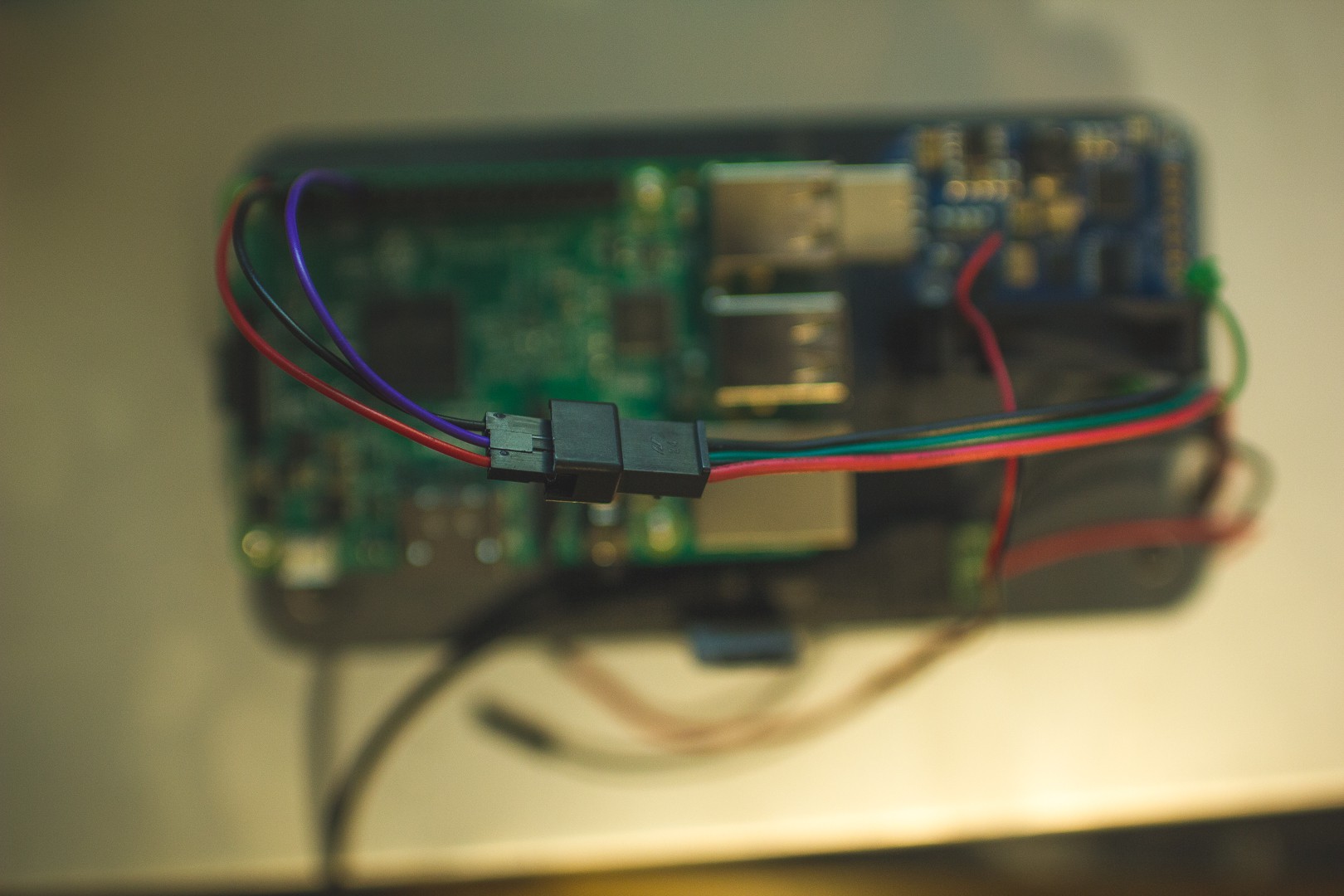
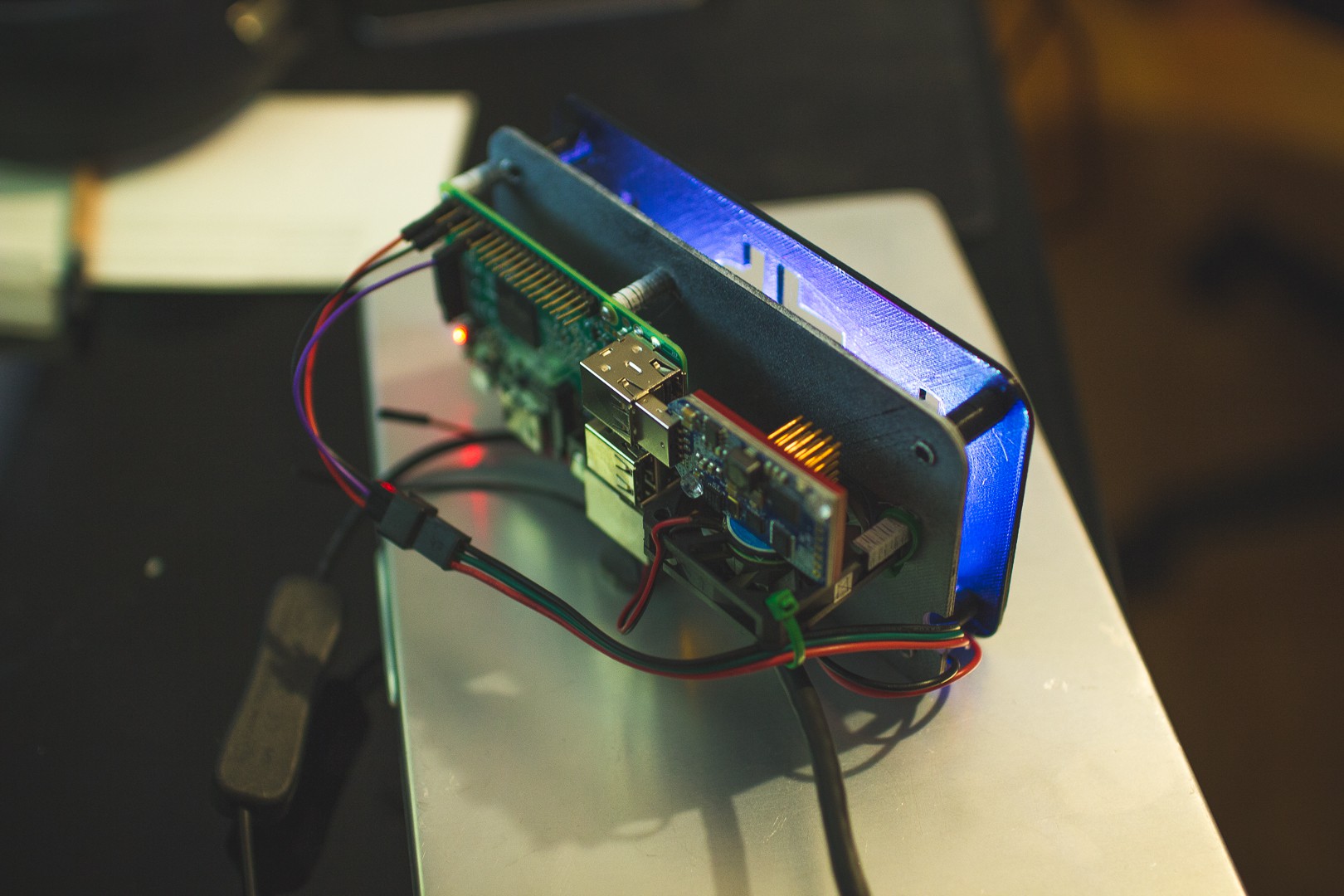
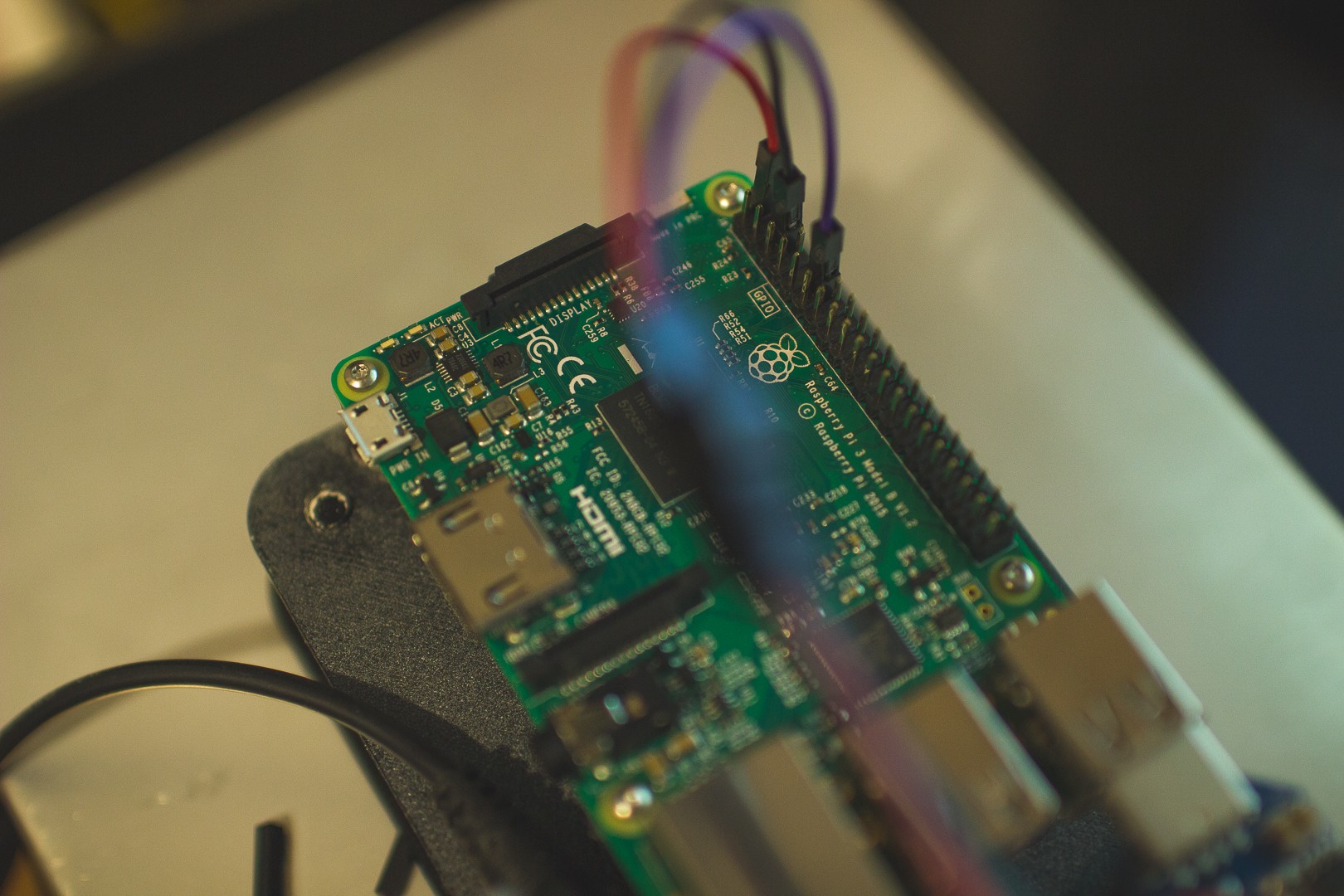
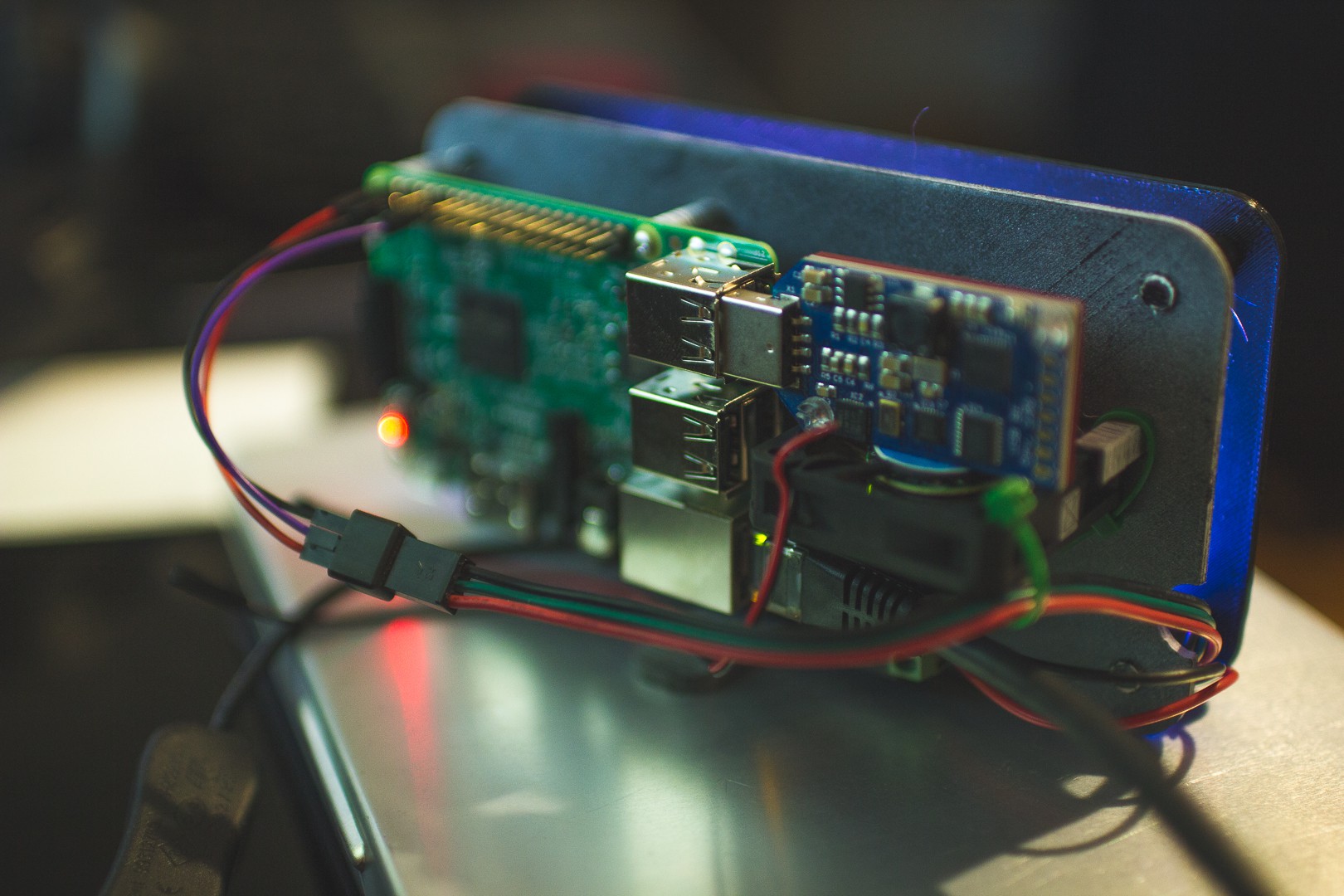
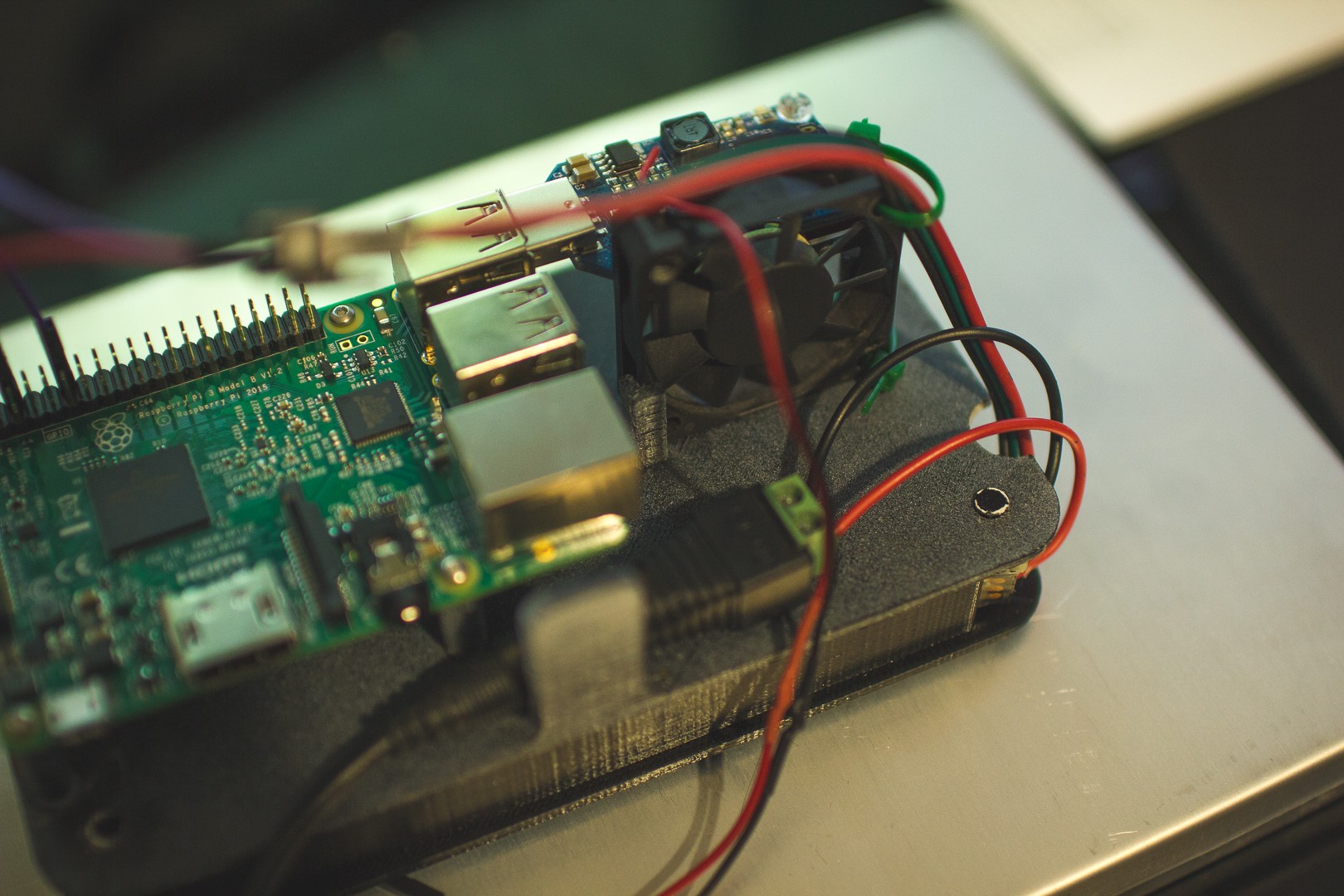
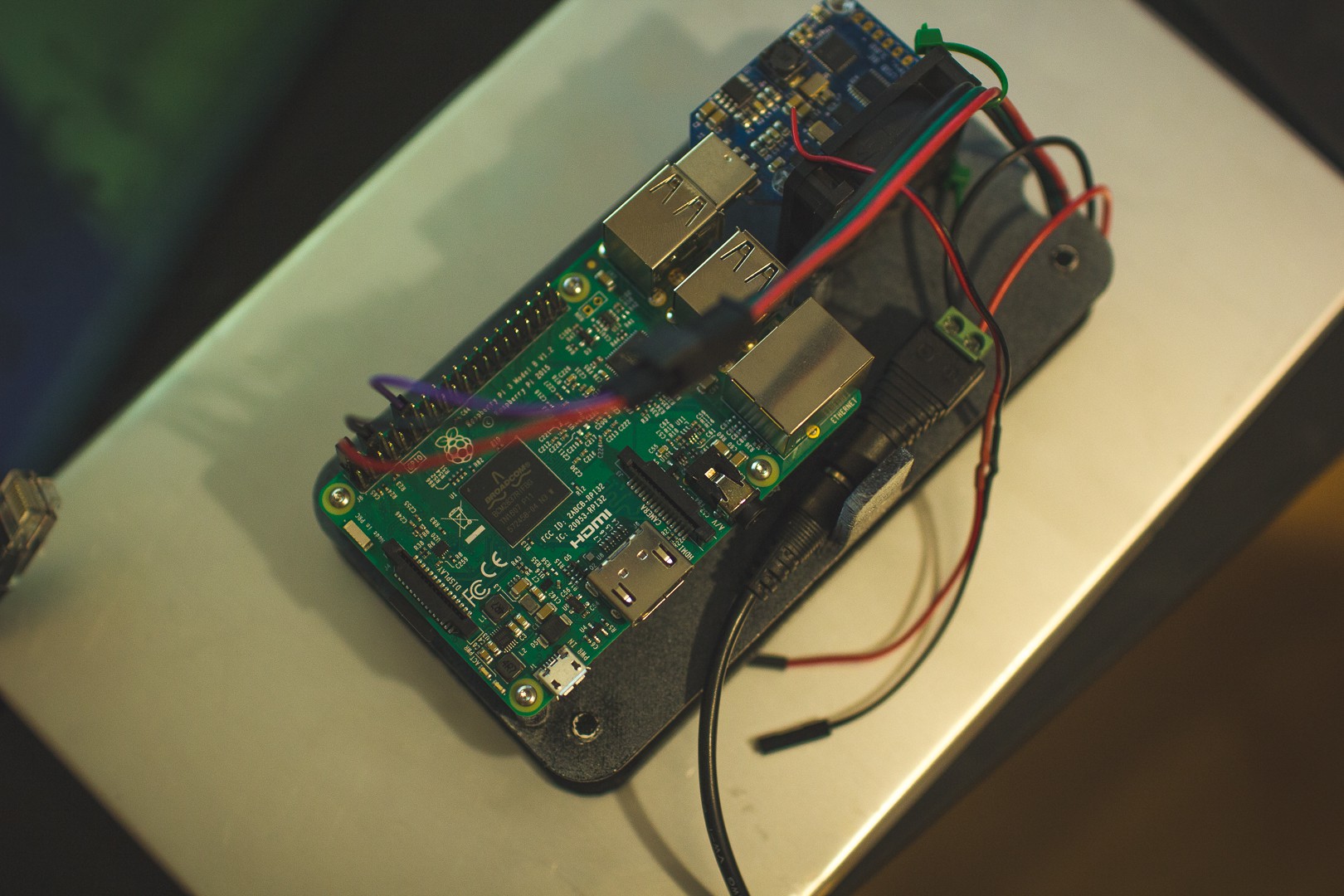
The 5V goes in through the barrel jack adapter to the neoPixels. The Neopixels have a connector on the other end with the same 5V line + a data line. The neopixel connector is connected to the Pi(5V + GND) and the data line is on GPIO18. The fan isn't connected but if it was it would just be on the second 5V of the Pi. Easy.
 Sean Hodgins
Sean Hodgins
Discussions
Become a Hackaday.io Member
Create an account to leave a comment. Already have an account? Log In.